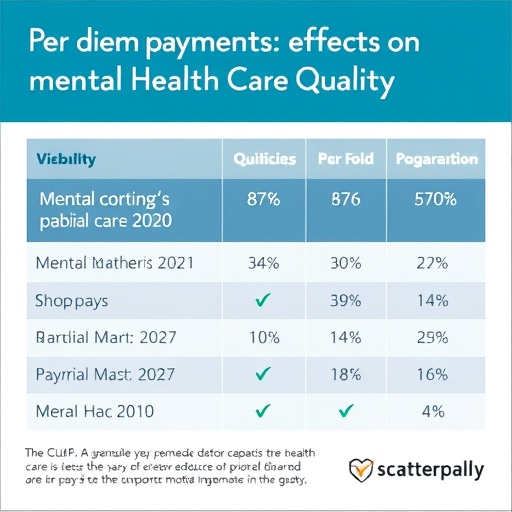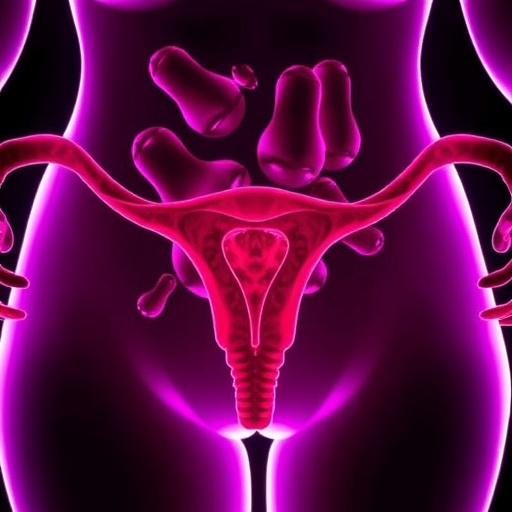In a groundbreaking study recently published, researchers have delved into the intricate relationship between cerebral resistive indices and the incidence of intraventricular hemorrhage (IVH) in premature neonates with gestational ages below 29 weeks. This pilot prospective cohort study, spearheaded by renowned experts, presents compelling findings that could reshape current understanding and clinical practices concerning the management of at-risk neonates in neonatal intensive care units (NICUs) across the globe.
Intraventricular hemorrhage is a significant complication that presents in neonates, particularly those who are premature. Understanding the mechanisms and predicting the occurrence of IVH is crucial due to its long-term implications, including potential neurodevelopmental disabilities. The cognitive and physical challenges faced by children who experience IVH in the early stages of life are profound, making it essential to identify risk factors that may aid in preventative measures.
The research considered premature neonates under 29 weeks of gestation, a population particularly vulnerable to IVH due to their immature brain development and systemic instability. The researchers explored cerebral resistive indices, which are measurements that reflect blood flow dynamics in the brain. By evaluating these indices, the study aimed to uncover potential predictive markers for the occurrence of IVH, hoping to offer new avenues for patient management.
What makes this study noteworthy is its prospective cohort design, allowing for real-time data collection and analysis over the course of the infants’ critical early days. This method enhances the validity of the findings, as it captures the evolving clinical conditions of the subjects without the biases that retrospective analyses may introduce. By closely monitoring the relationship between cerebral resistive indices and the onset of IVH, the researchers aimed to create a clear link that could help clinicians make informed decisions.
Participants in the study underwent regular Doppler ultrasound evaluations, which provided the necessary data on cerebral resistive indices. These evaluations are non-invasive and allowed for continuous surveillance of cerebral hemodynamics, a critical factor in understanding the developmental trajectory of these vulnerable neonates.
Preliminary results from the cohort have indicated a high correlation between altered cerebral resistive indices and the manifestation of IVH. As the cerebral blood flow dynamics become compromised, the risk of bleeding in the ventricles significantly increases. Therefore, it is increasingly evident that monitoring cerebral resistive indices can serve as a pivotal tool in identifying children at higher risk for IVH, potentially allowing for earlier interventions that could mitigate long-term consequences.
The applications of these findings are vast. Clinicians may be able to tailor therapeutic strategies based on an infant’s cerebral resistive indices, leading to personalized care protocols that could include medication adjustments, more aggressive monitoring, or other interventions aimed at supporting cerebral perfusion.
Moreover, as evidence mounts regarding the relationship between hemodynamic factors and IVH, there is potential for this study to catalyze further research into the mechanisms underlying neuroprotection in at-risk neonates. Understanding how to stabilize cerebral blood flow could pave the way for advancements in neonatal care practices both in preterm management and intervention strategies designed to bolster outcomes.
Ethical considerations around this study were meticulously addressed, ensuring that all participants’ rights were protected and that the findings would be utilized to enhance neonatal care. The study underscores the importance of ethical conduct in research, particularly in vulnerable populations like premature infants, where the potential benefits of research must be weighed carefully against the risks involved.
Significantly, the implications of these findings extend beyond the immediate clinical context. They contribute to a growing body of literature emphasizing the need for innovative approaches to managing the health of premature infants. As medical professionals advocate for evidence-based practices, studies like this one serve as critical building blocks that help shape guidelines and policies aimed at improving neonatal care quality.
In conclusion, the pilot study provides a hopeful glimpse into the future of neonatal medicine, where advances in technology and understanding of cerebral physiology can work hand-in-hand to protect some of the most vulnerable patients. As more research unfolds, the ultimate goal remains clear: to enhance the lives of premature infants and reduce the burden of complications like IVH through tailored, evidence-driven interventions.
This research represents a significant contribution to the field of pediatrics and neonatology, emphasizing the notion that early detection and intervention can lead to better long-term outcomes for critically ill newborns. The quest for knowledge continues, driven by the urgent need to connect emerging scientific insights with practical solutions that improve the lives of children worldwide.
The findings are anticipated to spark further inquiry into potential causative factors linking resistive indices and hemorrhagic incidents, opening doors to additional experimental and clinical studies aimed at replicating or expanding upon the initial observations. As the medical community continues to refine its understanding of these complex interactions, each step taken during research endeavors brings us closer to optimal care pathways for the most susceptible infants.
Given the potential for this study to affect clinical practices internationally, vigilance will be necessary to monitor how these findings translate from research articles into bedside applications that ultimately save lives and improve quality of life for these at-risk neonates. As we advance into the future, the children who are born prematurely, their families, and healthcare providers all stand to gain from ongoing research dedicated to creating safer, more effective care.
Subject of Research: Cerebral resistive indices and intraventricular hemorrhage in premature neonates under 29 weeks’ gestation.
Article Title: Cerebral resistive indices and intraventricular hemorrhage in premature neonates < 29 weeks’ gestation: a pilot prospective cohort study.
Article References:
Pal, A., Stewart, D., Ojha, K. et al. Cerebral resistive indices and intraventricular hemorrhage in premature neonates BMC Pediatr 25, 766 (2025). https://doi.org/10.1186/s12887-025-06119-0
Image Credits: AI Generated
DOI: 10.1186/s12887-025-06119-0
Keywords: Intraventricular hemorrhage, premature neonates, cerebral resistive indices, neonatal intensive care, prospective cohort study, hemodynamics, Doppler ultrasound.
Tags: blood flow dynamics in neonatal braincerebral resistive indicesclinical practices for at-risk neonatesimplications of intraventricular hemorrhageneonatal brain development risk factorsneurodevelopmental outcomes in premature infantsNICU management of premature infantspredictors of IVH in neonatespremature neonates intraventricular hemorrhagepreventing complications in premature babiesprospective cohort study on IVHresearch on IVH risk assessment





